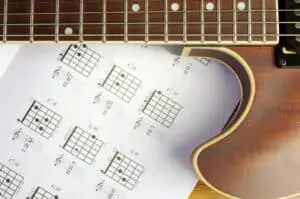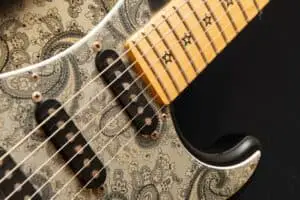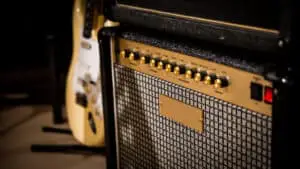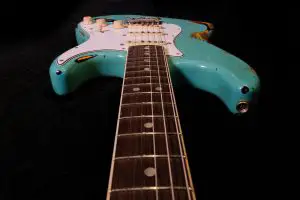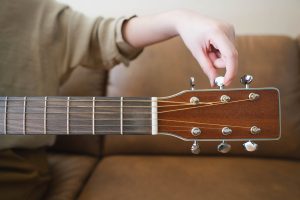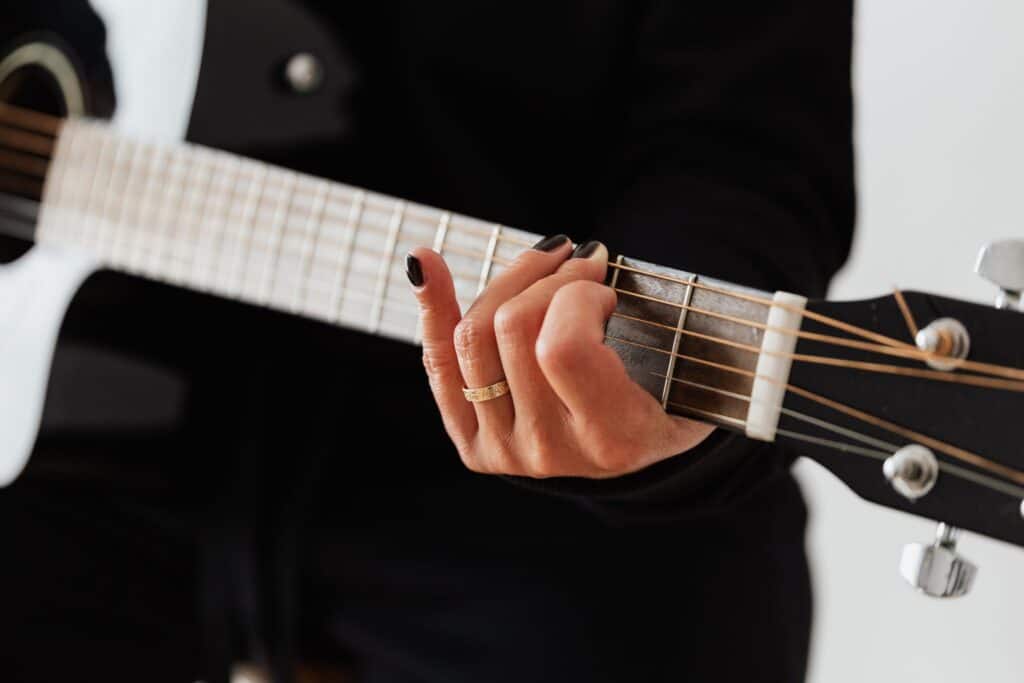
If you’re a great fan of diverse music, you’ve probably heard a ton of guitar solos in different genres. Surprisingly, in all these songs, the notes don’t sound the same. While you can attempt to count and name the notes from the number of strings you see, guitars actually have an infinite number of notes to play, some being more complex than others. So, what are the notes on a guitar?
When you first start playing guitar, one of the first lessons is how to label the strings. The strings are labeled E, A, D, G, B, and E. There are six notes for each string and seven primary notes on every guitar. These notes are A, B, C, D, E, F, and G.
As the guitar player’s skills evolve, there are always new selections of notes to learn.
How to Learn The Notes on a Guitar
Guitar notes aren’t as easy or conventional as the notes on a piano. For example, the notes on a guitar have seven primary forms, and then there are a ton of sharps, flats, majors, minors, etc.
First, when it comes to identifying the notes, guitar notes are determined from the thickest string to the thinnest string. So when we arrange the strings by their thickness, we have E, B, D, G, A, and E.
That’s why there are various ways to learn them. Before learning about the notes and how to learn them, I’d like to share a few essential things you need to know firsthand.
Essential Concepts
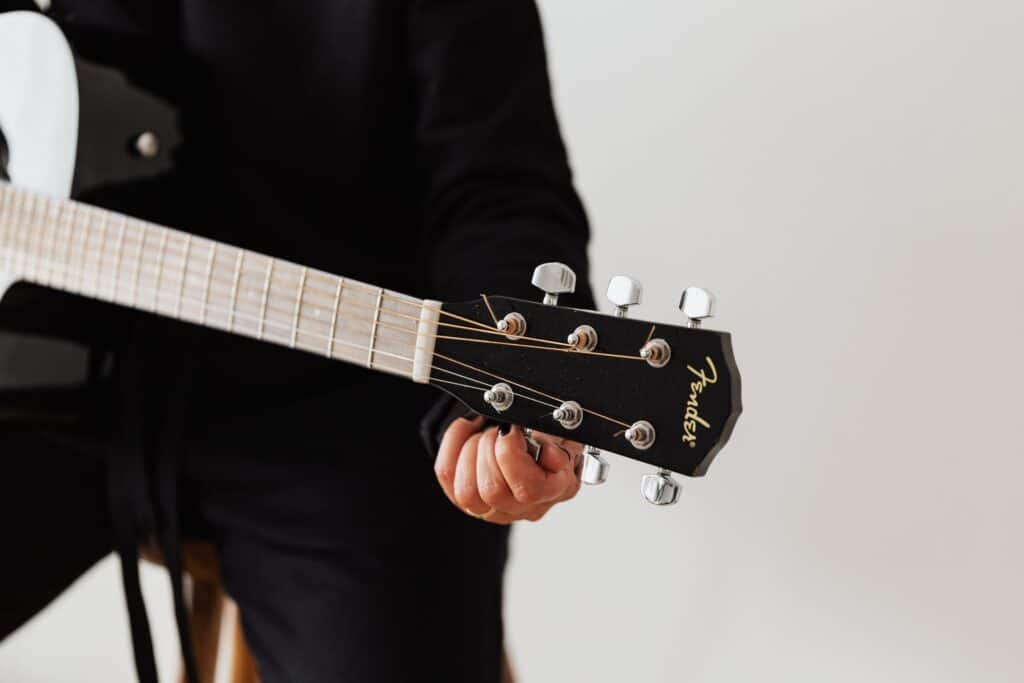
Knowing about notes for any instrument, especially the guitar, is essential to making the learning process go more smoothly for every novice. Below are listed a few of them.
Pitch
The pitch of a guitar is the type of sound it makes. It’s the texture of sound that reaches your ear whenever the instrument is played. The pitch of a guitar can be changed by the type of wood it is made from, the type of metal used for the strings, and the size and shape of the body.
Natural Notes
Natural notes are the notes on a guitar that, when played, give you the original pitch of the guitar. These seven notes do not have any high or low pitches. Instead, they exist when a guitarist strums the instrument. These are the seven notes mentioned earlier in the article.
Flat
A flat is a note that occurs between two natural notes. It means that the note being played sounds a semitone lower than the natural note it exits from.
Sharp
A sharp is also a note that occurs between two natural notes. However, when a sharp is played, it makes a sound that is one semitone higher than the natural note it is gotten from.
I discovered a little tidbit that two notes do not have flats or sharps. These notes are B and E.
Fret
There are just six strings on a guitar, so it would be pretty tricky to get these six strings to make flat and sharp notes. That’s why we have the FRET. Have you ever noticed 12 little metal strips placed vertically across the slim part of the guitar that you hold on to? These bits of metal are called frets. The guitar part they are located on is called the fretboard (or neck).
When players want to play flat or sharp notes, chords, and other progressions on a guitar, they move their fingers over various frets depending on the note they want to play.
Octaves
An octave is like the senior of a flat or sharp. It is the distance of one tone between any note. In simpler terms, it’s like taking one step behind from a note, and then the sound produced is a lower note, so when you take a step forward from the same note, you get a higher sound than that note. Every guitar has 4 octaves.
How to Learn The Notes

Let’s check out how you can learn the names of the notes on a guitar. There are fun and easy-to-remember ways to identify the primary notes on a guitar which could become very helpful when trying to learn the notes.
Form an Acronym
You can modify all the notes for each string to form an acronym, for example:
(6th string) E-ach
(5th string) B-unny
(4th string) G-ets
(3rd string) D-rowsy
(2nd string) A-fter
(1st string) E-ating
Western Music System
Another way to identify the notes on a guitar (which depends on the music you’re playing) is the western music system.
Here you can identify notes by simply reciting them alphabetically. As we mentioned earlier, there are seven notes A, B, C, D, E, F, and G. This system helps you identify higher notes and lower notes by arranging them in order (so, G is higher than F and B is lower than C).
Why You Need to Learn Guitar Notes
There are many benefits of learning the notes on your guitar. Learning the notes on a guitar doesn’t simply mean that you know their names. It also means that you will be able to tell the notes apart by their sounds. When you can identify the notes this way, you’ll be able to do many things you otherwise wouldn’t.
- Tune your guitar without needing to stress about a tuner or an application.
- Easily learn new chord progressions and notes from songs.
- Knowing the notes makes it easier to play them with other instruments.
- Learning notes is very important if you’re looking to chase a professional career as a guitarist.
Tips to Play The Notes on a Guitar
Finally, learning to identify notes on a guitar is a pretty fun experience. This experience is even better when practicing these notes on the guitar. So, here are a few tips that might help.
- Start with a single string and progress down the fretboard to play the different notes.
- Watch videos and copy the finger patterns of teachers on your guitar.
- Remember the six-string notes E, B, G, D, A, E, and the seven natural notes, A, B, C, D, E, F, and G.
- Keep in mind that learning notes is easier when you constantly practice.
Conclusion
To conclude, the notes on a guitar are a bit more complex than the notes on a piano. The guitar has six notes for each string, which are labeled E, A, D, G, B, and E. And then there are seven primary notes on every guitar. These notes are A, B, C, D, E, F, and G. And that’s not where it ends. There are a ton of sharps, flats, majors, minors, etc. But don’t let it become too confusing. There are some fun and easy-to-remember ways to identify the primary notes on a guitar which are worth to give a try.



